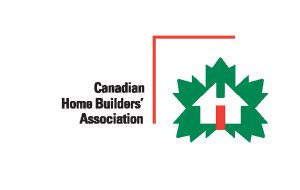The federal government released its 2022 budget in April and, with its emphasis on housing affordability, it was dubbed “the housing budget” by many in the media. The moniker is a testament to just how prominent residential construction industry issues were in the 304-page document – a reflection of the advocacy efforts of the association over many years.
We can now say that the federal government, thanks to persistent and consistent messaging from CHBA to MPs, government officials and policy-makers, is now aligned on key housing affordability issues, and most especially supply; this is resulting in very significant policy change and program support for the industry and market-rate housing. The message – that there is a dramatic housing supply shortage in Canada that is impacting affordability – was formally acknowledged in the budget, along with the need to expedite building more new homes. Taking a true leadership position as CHBA has called for, the government provided a specific estimate of the shortfall of housing units, stating Canada will need to build at least 3.5 million new homes by 2031, and double our housing starts to do so.
A true win
This target, a true win for the association, is significant. Though the supply and demand nature of the housing market, and its impact on home prices seems obvious, it was truly a challenge to change the conversation at the federal level, and all levels across Canada. And while these statistics and the measures announced to support getting there are only part of the solution, establishing and quantifying this shortfall will now put the lens on all levels of government (and very importantly, municipalities) to put in place more policy to get there.
One of the biggest hurdles is getting municipalities onboard with facilitating more supply. The federal government’s Housing Accelerator Fund (HAF) is meant to incent and support municipalities to get more market-rate housing online faster. CHBA has been engaging on the design of this very important and innovative fund. If designed well, the Fund has the potential to help address supply issues. CHBA supports the apparent plan for CMHC to issue the funds on a performance- based basis, which will help ensure the funds truly result in more housing starts.
Labour shortages will also make doubling the current rate of construction challenging when finding skilled trades is already difficult, but by setting the target, policy must follow to support it – and this is starting. According to BuildForce Canada, approximately 22 per cent of the labour force is set to retire in the coming decade. CMHC has been advocating that in addition to promoting careers in skilled trades, supporting training, and providing financial supports to companies and individuals with respect to skilled workers, improving the immigration system for skilled workers will be key. Canada needs to respond better and more quickly to labour shortages in residential construction through permanent immigration solutions. And the budget and other recent federal announcements show the government is headed in that direction.
More housing supply
As we head into the summer, CHBA will look to work with all levels of the association to shift its efforts to reaching municipal decision makers – and their constituents, who they answer to – to help them understand the link between housing supply shortages and high home prices, and the effect it’s having on communities across the country; and that the solution is unquestionably more housing supply.












